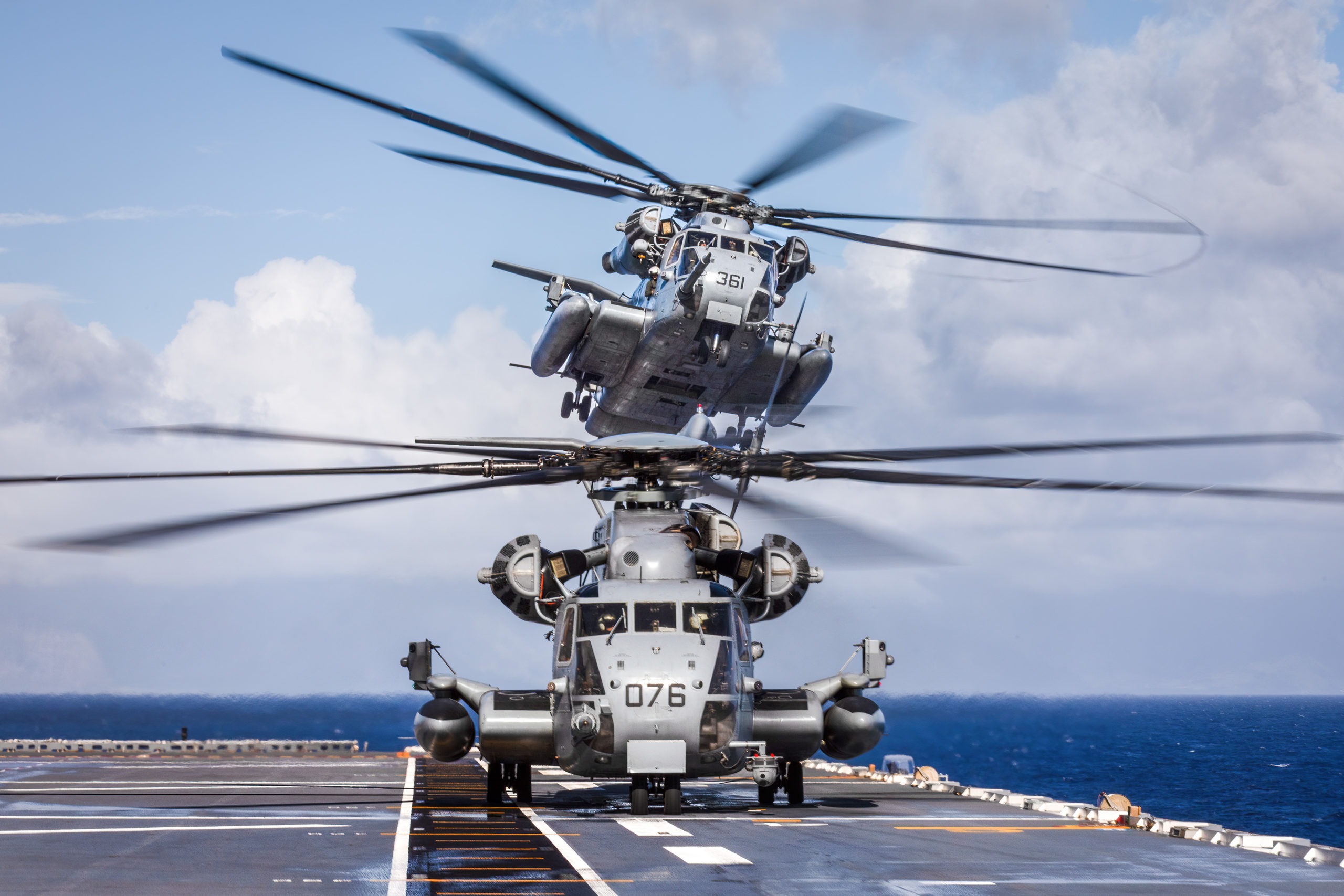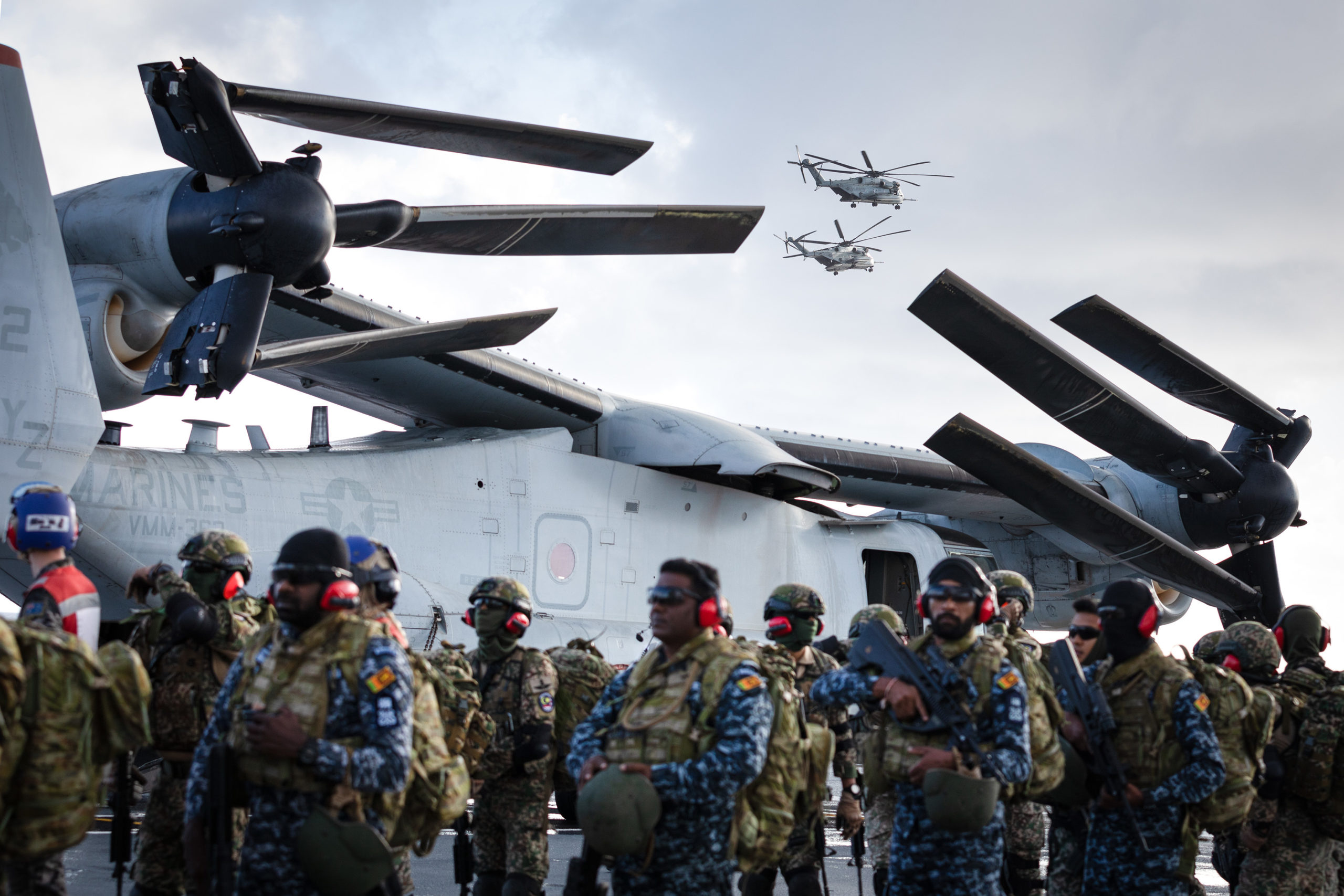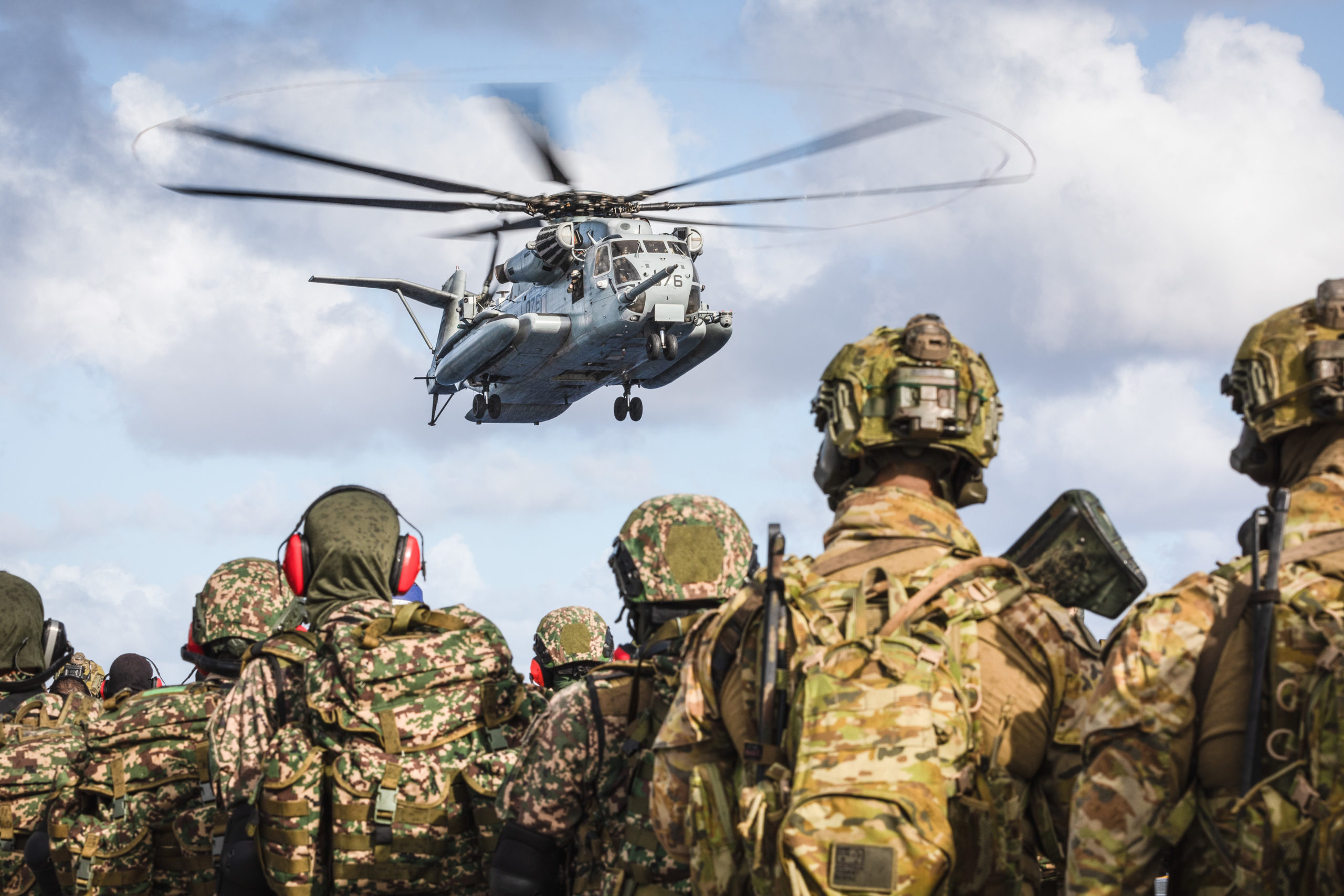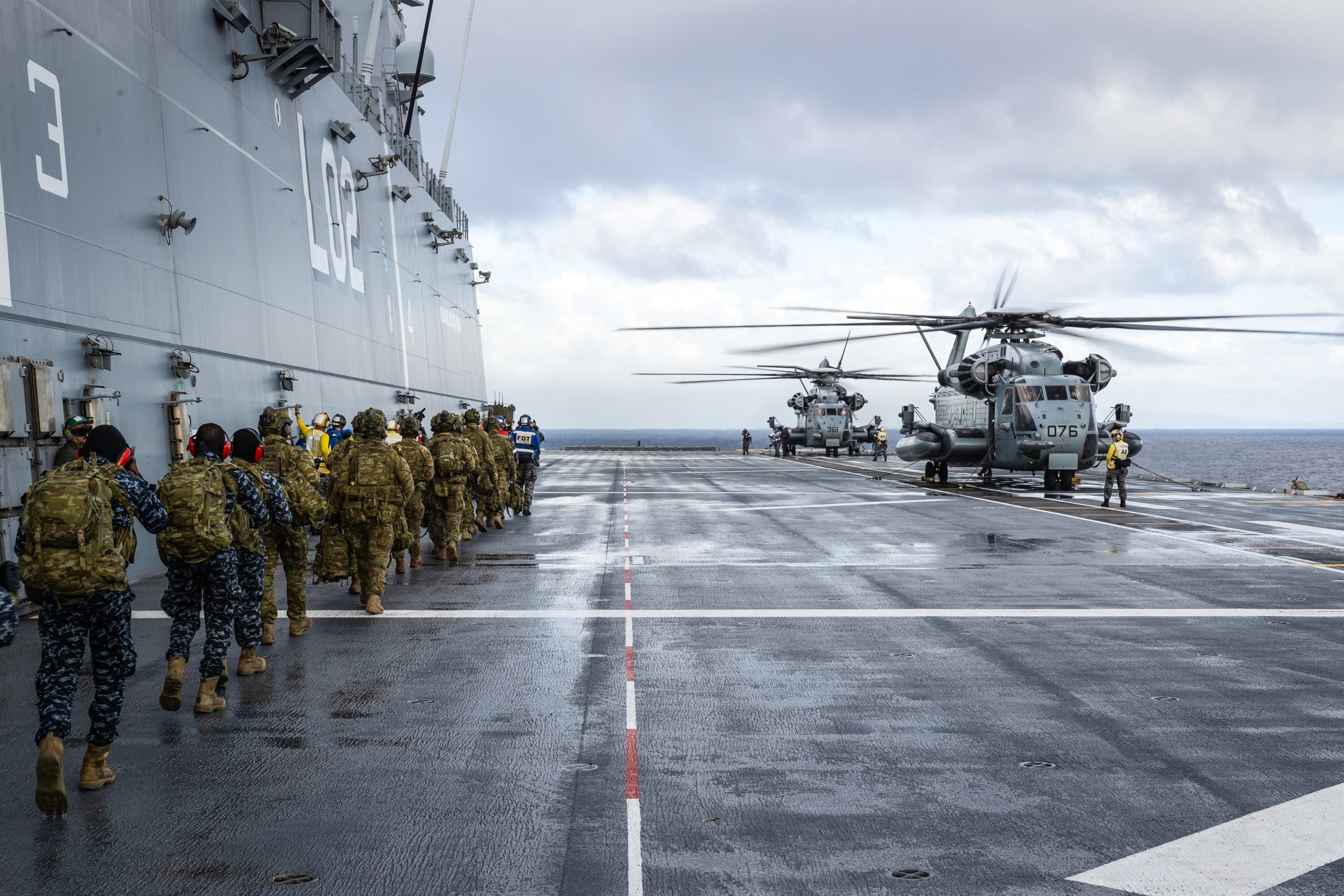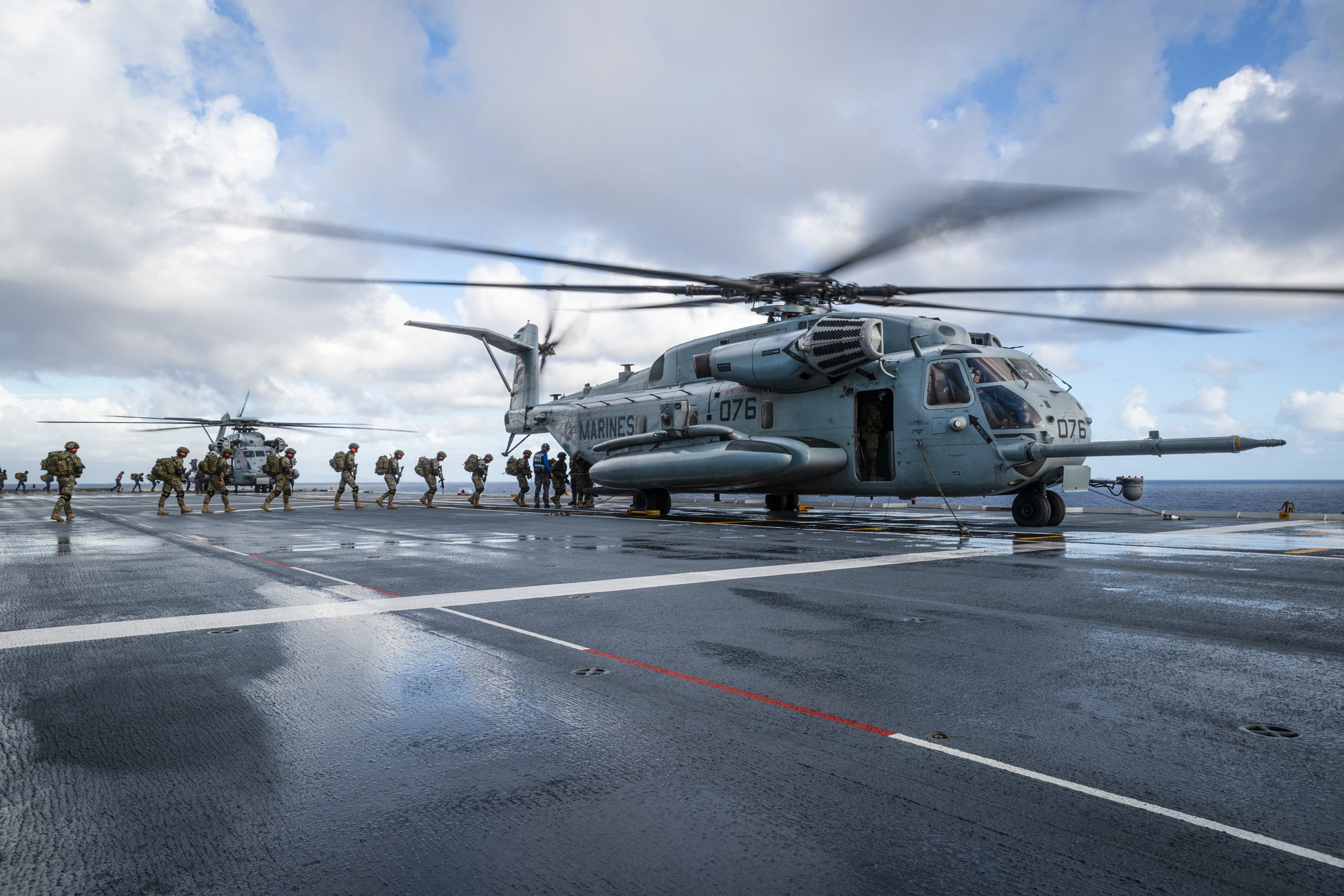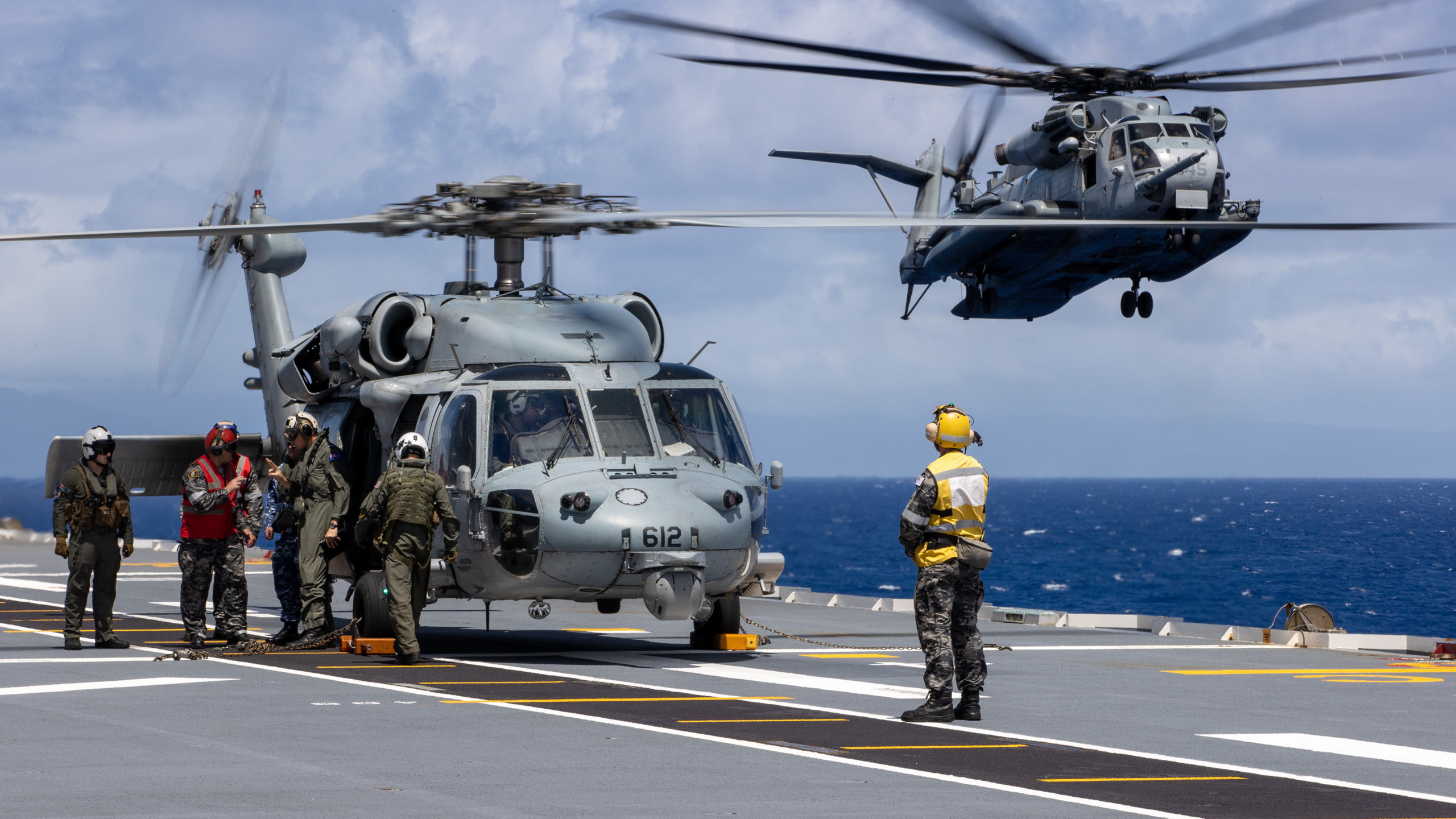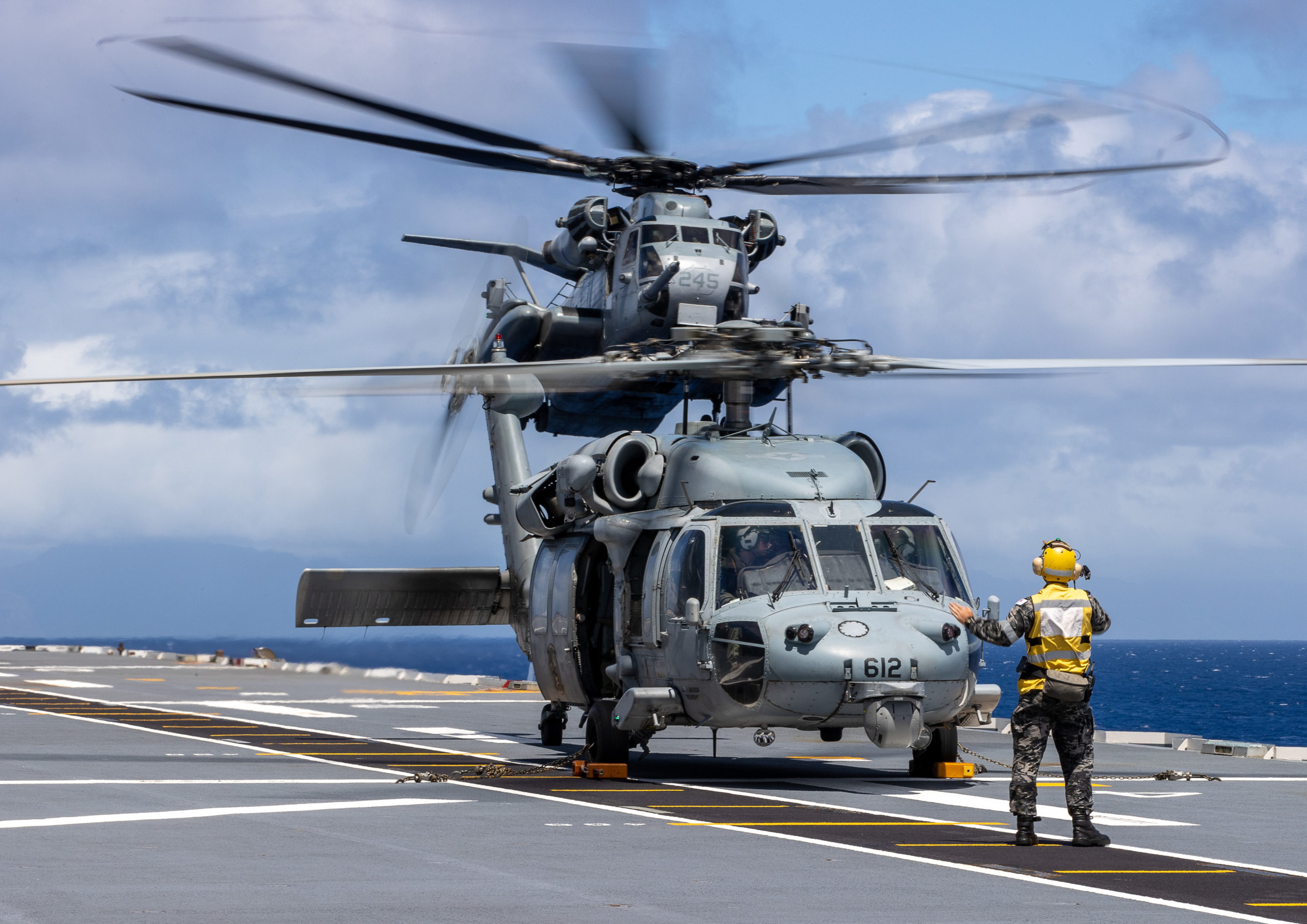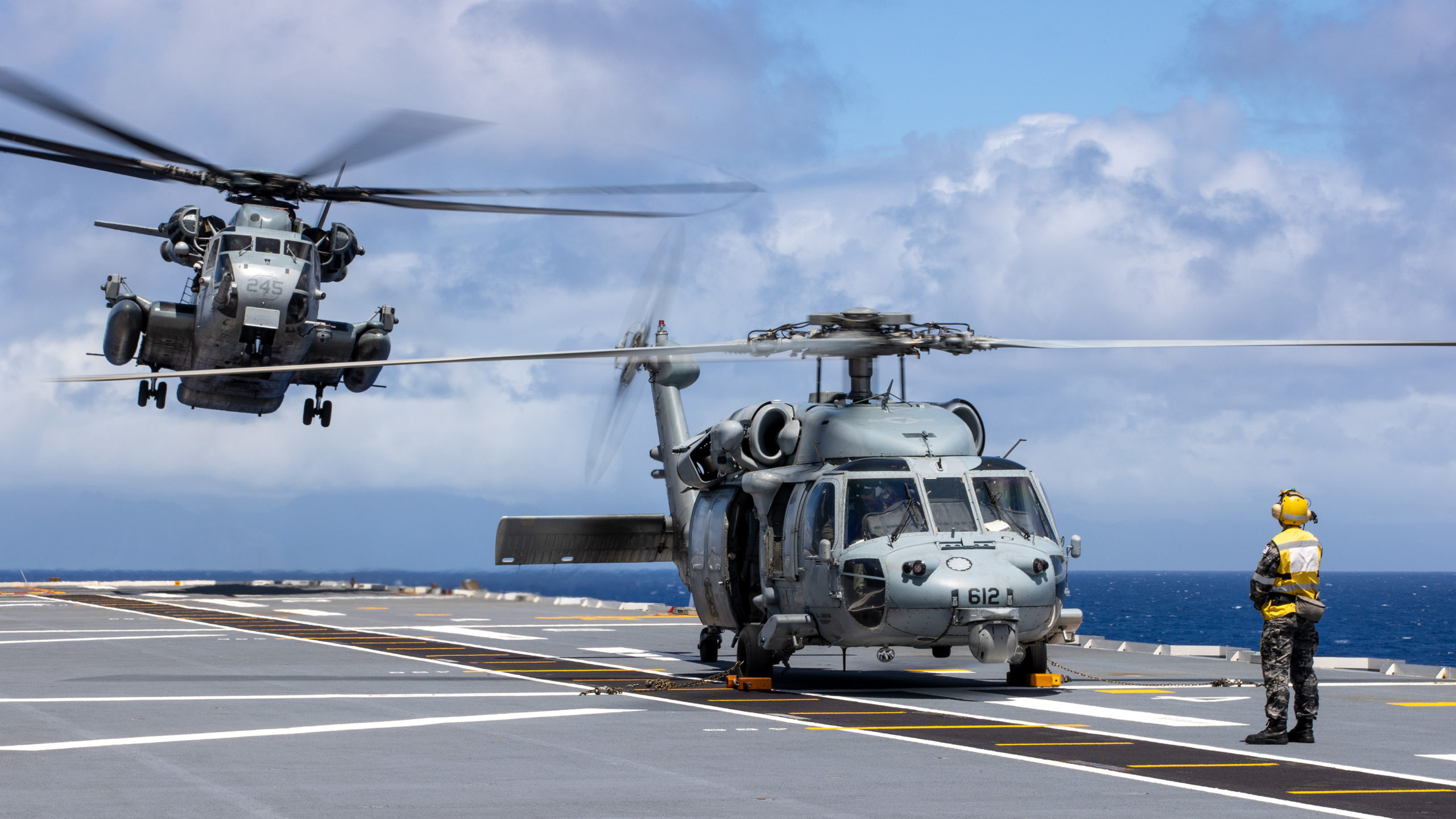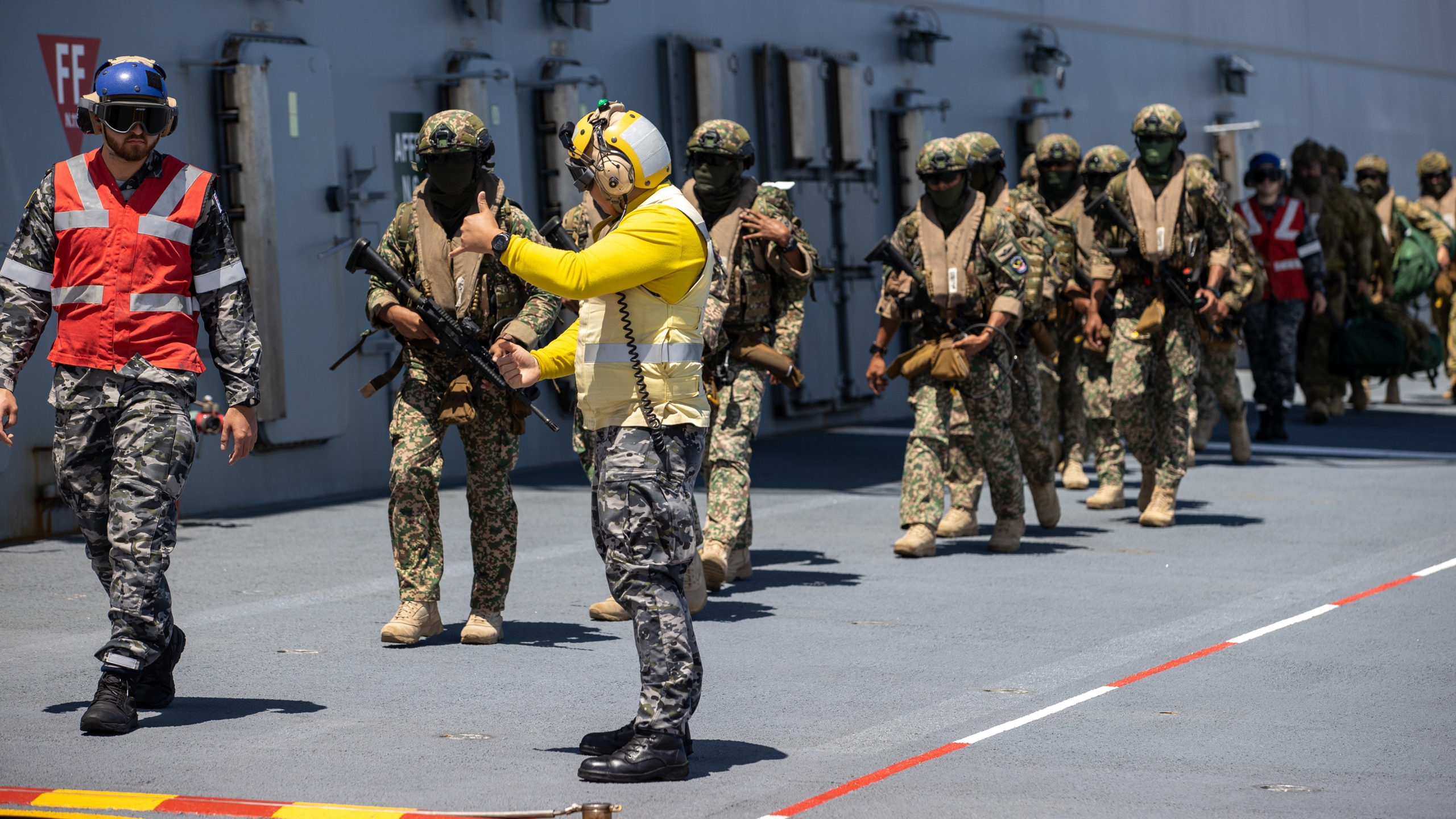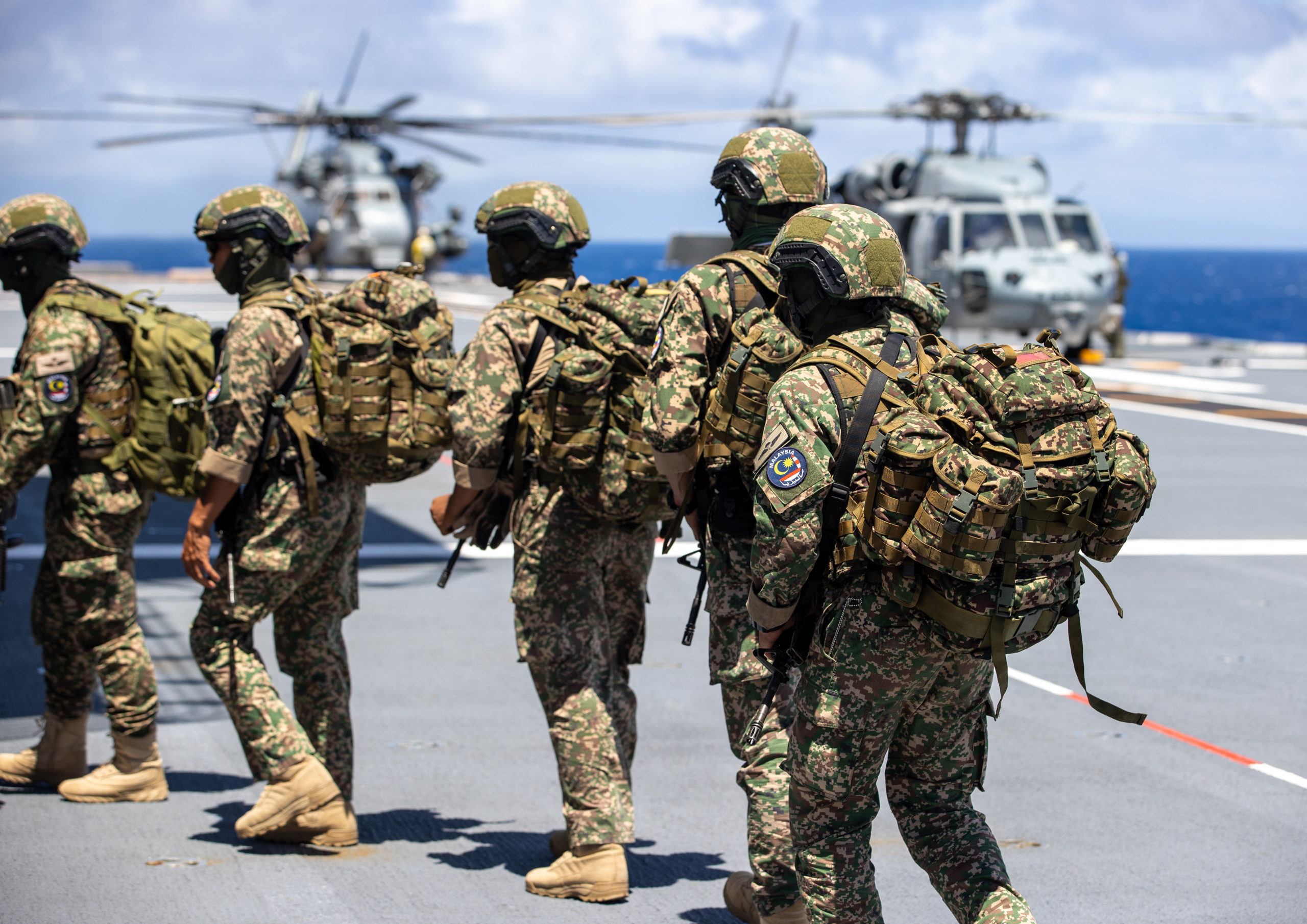We will publish interviews from San Diego and Hawaii this year along with interviews in Australia looking at the recalibration, reset, and re-thinking of Pacific defense.
One aspect is the question of the role of amphibiosity in that effort.
We will return this in those discussions.
But for now, here are some looks at RIMPAC 2022 and the amphibious raid exercise.
One aspect of the change is working not just interoperability but interchangeability which is highlighted by the operations of the CH-53E onboard the Canberra.
As one U.S. Admiral put it: “When operating in a coalition, it is not simply a question of whether the forces can work together but of where and with what authorities to do so in a crisis.My definition of interoperability begins with our ability for systems to talk to each other, and our TTPs to be synchronized. Interchangeability is where we understand where our national objectives overlap, and we drive into that space, and then we operate in that space.
“For example, with regards to Australia and the United States, our objectives, have a have a large overlap in a Venn diagram. Maybe Indonesia and the United States don’t overlap as much. I’m not asking them for support. I’m understanding what their objectives are, and I’m finding where our objectives overlap, then I will let the policymakers understand how in the warfighting perspective it’d be great if we can help reshape the Venn diagram of intersecting objectives. But that’s not my job. My job is to understand, what’s an ally’s objective.? What’s your objective in the South China Sea? What’s your objective as far as freedom of navigation? Are we on the same page? Let’s just start there. And then work together.”
An article published July 28, 2022 by FLGOFF Lily Lancaster highlights such an operation:
You know who has got your back on real-life operations when you have practiced it in training. That’s why Landing Forces for Rim of the Pacific (RIMPAC) 2022 are putting their training to the test in a multi-national reconnaissance mission.
In a simulated scenario, Australian Army soldiers and United States Marines lift off from the Landing Helicopter Dock HMAS Canberra (L02), in U.S Marine Corps CH-53 Super Stallions. Before their mission even begins, they are challenged with the insertion method called helicopter casting (helo-casting), jumping from a low flying helicopter into the ocean.
“Helo-casting for the first time was an experience, it was very exciting. It was a fresh way of looking at how we can apply ourselves. Yes, it was fun, but most importantly it exposed to everyone different methods of inserting into an environment,” said Lt. Joel Scarramella, 2nd Battalion, Royal Australian Regiment’s newest platoon commander.
Commanding Officer of 2nd Battalion, the Royal Australian Regiment, Lt. Col. Mark Tutton knows this is an important opportunity for the Australian Army.
“Inserting onto a beach from a United States aircraft is something that we must practice. Developing our interoperability makes us stronger and more adaptive as a force,” said Tutton.
What makes this helo-casting exercise more unique is the Zodiac F470 bundle that they dispatch from the helicopter then has to be inflated in the ocean. Responsible for carefully packaging the zodiacs is Australian Army Air Dispatcher Cpl. Jesse Ablett’s team.
“How it works is we put all the equipment is put inside the deflated boat and into a bundle,” said Ablett. “Once it is dispatched from the rotary wing aircraft, it uses a gas bottle to inflate so the boat crew can set it up once they are in the water.”
Having jumped into the deep end, soldiers boarded their Inflated Small Craft F470 Zodiac to push onto the beach.
Together, with 3rd Reconnaissance Battalion Marines, the teams make their way to land where they will spend the next few days conducting reconnaissance on a fictional village at Marine Corps Training Area Bellows. They have the task of silently capturing intelligence and planning pathways to remain unnoticed by the enemy before calling in a company of infantry soldiers to secure the site.


